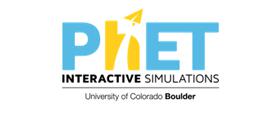Graphs of Linear Functions
Students are required to make connections between coordinates, straight line graphs, the gradient of a line, where the line cuts the y axis and the equation of a straight line. This list of resources is designed to provide the opportunity for students to recognise, sketch and produce graphs of linear functions of one variable with appropriate scaling, using equations in x and y and the Cartesian plane.
Visit the secondary mathematics webpage to access all lists.
- ALL
- Textbook
- Video
- Interactive resource
- Group work
- Activity sheet
Textbook
Straight Line Graphs
The textbook begins with a recap of coordinates before moving on to explanations, examples and exercises requiring students to plot points on straight lines. Students are asked to find connections between the x and y coordinates to begin to form equations of straight lines. The next section considers how to plot a straight line by generating coordinates given the equation of the straight line. There is detailed explanation of how to calculate the gradient of a straight line. The final sections explore how to calculate the equation of a straight line from the graph by calculating the gradient and the y intercept and how to find the equation of the line when only given two points through which the line passes.
The activity sheet contains four activities.
Chirping crickets explores the relationship between the temperature and the number of chirps made in one minute.
In the activity, Shoe size, students use the relationship between the length of the foot and the shoe size to create a ready reckoner.
Temperature conversion looks at how to convert between degrees Fahrenheit and degrees Celsius.
Mozart requires students to plot a graph based upon the age and compositions of Mozart.
Intermediate 1
Chapter 11 entitled Graphs on page 198 of the textbook (page 203 of the pdf) begins with a discussion point about the equations of lines parallel to the axes. Further discussion points ask students to find more coordinates which lie in line with the given coordinates and to devise an equation connecting the pairs of coordinates.
The next section requires students to generate coordinates given the equation of a straight line followed by an explanation of how to find the gradient of a straight line. Students are asked to find the gradient of straight line given their equation, initially where the equation is given in the form y=mx+c and then where the equation is not in this format so that rearrangement is necessary. Students are also required to sketch graphs given equations.
The final section explores some practical uses of straight line graphs.
Video
Straight-Line Graphs
This video is ideal for use as teacher inspiration when planning activities to strengthen understanding of straight line graphs. The teacher delivers a lesson on straight line graphs to a lower ability Year Nine class. Using a set of axis drawn on the floor of the classroom, practical activities help students to understand the concepts of gradient and intercept. Groups of students are given some simple y=mx+c equations, from which they work out pairs of coordinates and they then stand at those points. By doing this, they start to appreciate what their graph should look like and how its 'slope' changes with the different equations they have been given. This activity could be adapted to meet the needs of students of different ability.
Interactive resource
Graphing Lines
Graphing Lines is an interactive resources that gives the opportunity for students to explore the parameters of a linear equation; how modifying the graph affects the equation and how modifying the equation affects the graph.
There are three areas in which the variables of the graph or the equation can be altered, and six levels of challenges on the “Game Screen” for students to attempt. The teacher guide explains in detail what can be achieved with the resource.
Group work
Straight Line Graphs Mystery
This resource is ideal for use as group work, stimulating discussion, deepening understanding and highlighting misconceptions. The activity contains twenty mystery fact cards, each containing a statement about the features of straight line graphs and how they lie on a 3 by 3 grid. The rationale is for students to use the fact cards to discover the features of each graph - its gradient, its intercept, its graph and ultimately its equation - by discussing the possible options and working towards a solution of which straight line graph lies in each grid cell.
Activity sheet
Graphs
These instant maths ideas are ideal as starters, extension work or as probing questions to assess understanding. This co-ordinates and straight line graphs resource contains ideas such as asking students to draw coordinate pictures, explore the equations of lines which are parallel to the axes, investigate the properties of parallel lines, interpret what the gradient of a line means and make human graphs. It also suggests a series of open ended questions.
Straight Lines: Y = mX + c
This interactive excel program from The Virtual Textbook is about finding the equation of straight lines in the form ax+by+c=0. The first two sheets deals with the equation of the line through two given points and the equation of the line through a point perpendicular to a given line. The graphs of the lines can also be shown on coordinate grids.
Printable worksheets are also included.
Straight Line
A straight line is shown with the x and y axis intercepts shown. A point P is marked on the line but the coordinates are not given. P is then joined back to the origin, splitting the triangle into two parts. The challenge is to find the area of each triangle is terms of x or y, and then determine the equation of the line.
The result involves calculating the area of a triangle, equating areas, and then algebraic manipulation to derive the equation of the line








